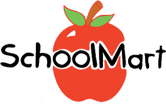Implementing Useful Online Teaching Strategies in the Classroom
In the not-so-distant past, blended learning was limited by a lack of technological resources and inexperienced teachers who were more accustomed to traditionally in-person classrooms. In the last two years, technology has been a major focus for educational budgets with digital devices such as tablets and laptops pouring into schools and becoming an essential piece of the learning experience. Because of this upsurge in technology, teachers have been forced to adapt and learn how to adjust their teaching styles to accommodate virtual learning. While most schools have returned to fully in-person environments, it is important to recognize the benefits of virtual learning practices and how they can translate to an in-person environment.
Maintain a Virtual Classroom Space
Even with most schools taking place in traditional classrooms, there is still value in maintaining an element of learning that can be accessed virtually. Incorporating virtual learning platforms such as Schoology and Google Classroom allows students and their parents or guardians to access information about lessons and tasks to provide support at home and ask questions to the instructor as needed. In addition, by providing online resources to students in the classroom, you provide them with the ability to quickly and easily find the information they are looking for as a form of just-in-time support. Consider these examples as classroom resource links:
Virtual Word Wall
Depending on the nature of the subject or lesson, providing an online glossary of important terms to know can help serve as a virtual “word wall” for students to reference anytime.
Explanation Resources
Another great use of online resources in the classroom is providing useful video, audio and text-based links to serve as additional explanations where necessary. These can be embedded links in directions and models within assigned work that a student can click to access. This helps to empower students to find the answers they are looking for first, before asking for help from the teacher.
Secure Access to Assignments
In addition to educational references, classroom technology can be implemented to help give students more secure access to classroom assignments, a place to submit completed work and re-download classroom materials as needed.
Instructional Video Library
Having access to recorded lessons can help students with learning key concepts and steps for completing difficult assignments. This also helps cut down the amount of time that teachers use re-explaining concepts that have already been taught, thus allowing lessons to flow without as many disruptions. If lessons and specific concepts are recorded, they offer learners access to review process information at their own pace.
The reality of most classrooms is that students aren’t expected to understand new concepts on the first try. In other cases, lessons may seem clear and understood during live instruction, however, not as clear the following day. Recorded sessions provide students with a safe space to review content that may take them longer to retain.
Learn More About Online Learning and EdTech with SchoolMart
It’s important to recognize the value of the virtual practices we learned during blended learning experiences over the last couple of years. Virtual practices have added a variety of useful tools that help to complete tasks and enhance the learning experience as a whole. Learn more about blended learning and classroom technology from the edtech experts at SchoolMart by visiting our blog!
